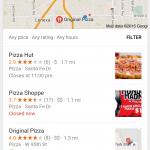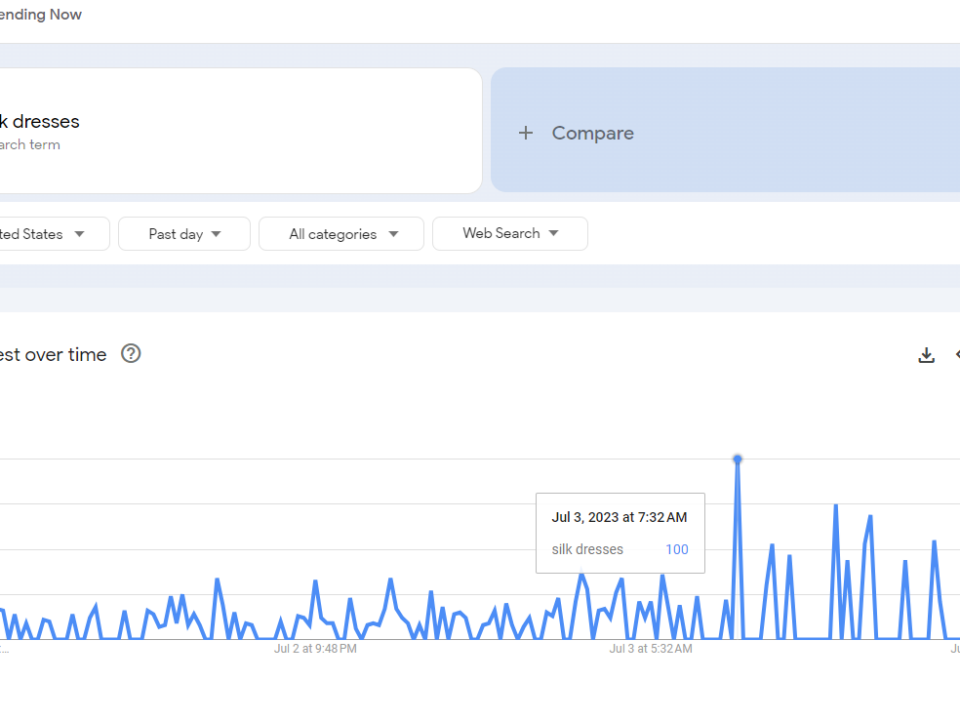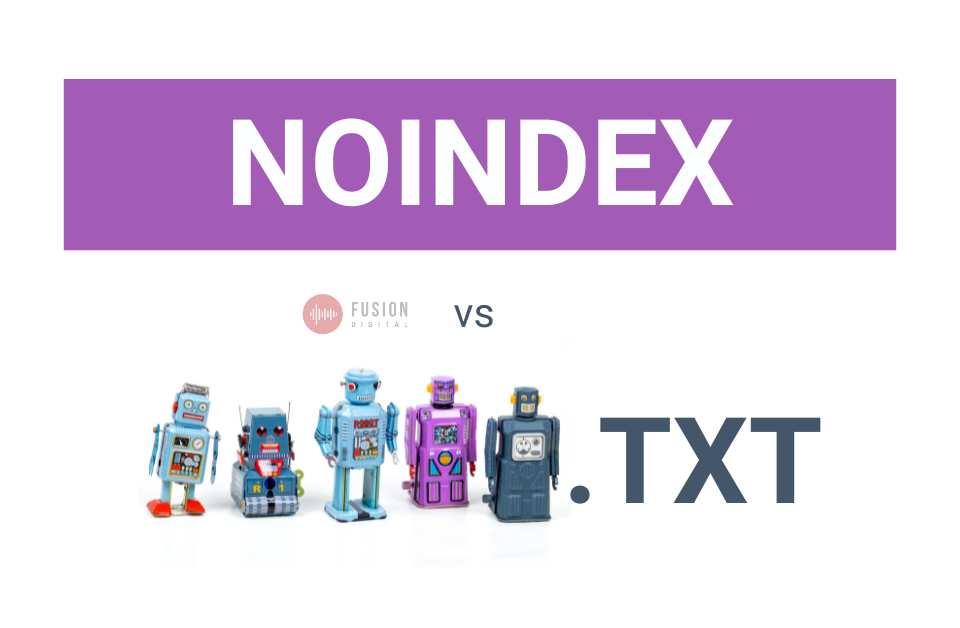
Influence: Examples & Applications of the 6 Principles of the Psychology of Persuasion on the Web
October 13, 2013
Understanding the Robots.txt File for Non-Developers
April 2, 2014
- AI
- algorithm manipulation
- algorithm updates
- artificial intelligence
- bing
- contextual search
- cortana
- disambiguation
- duckduckgo
- google algorithm
- google calendar
- google drive
- google hummingbird update
- google local
- google places
- google plus
- google reviews
- google searching
- keyword rankings
- keyword research
- machine learning
- mobile device traffic
- personalized search
- privacy
- search personalization
- semantic search
- strings to things
- voice search
- website security
- wired

In the old days of search engine optimization, the primary goal was achieving #1 rankings in Google and other search engines. Ranking #1 used to mean that everyone searching for your keyword saw your site in the top spot, no matter what. But achieving #1 rankings simply doesn’t mean what it used to anymore.
In a continually evolving effort to deliver the most relevant organic search results (and profitable ad experience) possible, Google is increasingly custom-tailoring, contextualizing and personalizing the search engine results pages, and even auto-suggested key terms when you begin typing your query, based on numerous criteria. The same holds true for runner up search engine, Bing.
Today, a user who searches for “pizza” from Kansas City on a Nexus 6 Android mobile device while signed into their Google account via Chrome at 7 p.m. can get dramatically different search results from a user who searches for the same exact keyword from Seattle on their Mac laptop at 11 a.m. without being signed into a Google account.

NEXUS 6 BROWSING GOOGLE MOBILE SEARCH RESULTS FOR “PIZZA” SIGNED IN, LOCATION OVERLAND PARK
IE10 INPRIVATE BROWSING GOOGLE DESKTOP SEARCH RESULTS FOR “PIZZA” SIGNED OUT, NO LOCATION
In this article, we will discuss the new face of organic search results in Google as it pertains to personalized and contextualized results.
Personalization vs. Contextual Search Results
Many search professionals delineate clearly between “personalized” search results and merely “contextual” search results.
Contextual search results may stem from IP address, location or languages settings in your browser, your current location, time of year, day of the week, time of day. These are simple data points that can add a layer of context to the content shown in your search results.
Personalization, on the other hand, may influence your search results using more complex signals. This could include being based on sites you have showed a past interest in through your browser or search history, whether you are signed in or out of a Google account that houses more extensive information about yourself (including on your Google+ profile). It’s deeper than simple date, time, location. It tries to get at the heart of who you are, the kinds of sources you gravitate to, and the content that will most satisfy you as a searcher.
The line between contextualized search and personalized search used to be distinct, but as time goes on, the search engine algorithms get progressively more sophisticated. The lines between the two become blurred to form a completely custom, seamlessly personalized search experience for every searcher, every query, every time.
The Evolution of Google Search Personalization
In 2002, when asked by WIRED contributing writer Kevin Kelly why Google would bother with web search when there were so many other search companies, Google co-founder Larry Page is reported to have said, “Oh, we’re really building an AI.” That single sentence has gone on to define many of the advancements in Google’s personalized search, machine learning, and ultimately, artificial intelligence since – and the direction Google will take in the future.
Testing Personalization Features, 2004 to 2012
In Google, “Personalized Search” began in 2004 as part of a Google Labs beta, then moved to non-beta but a separate search function in spring 2005. By fall 2005, it was integrated into the main search algorithm for signed in Google users. By the end of 2009, personalized search was integrated into the algorithm for all Google searchers – signed in or not – and “Social Search” was being developed in Google Labs to surface relevant content from your connections on Google, Twitter and FriendFeed (rest in peace, April 2015) within your search results.
Though not obviously designed for personalization, Google launched the “Caffeine” infrastructural update in 2010, driving faster crawling and indexation, in order to serve more timely, relevant content for time-sensitive topics in search. The goal was to create a fresher, richer index of content. This would influence the later “Hummingbird” update in 2013.
In January 2012, Google launched “Search, Plus Your World.” Building on their Social Search learnings, Google results displayed personalized results from content shared within your social network – including your own photos and posts, profiles of people in your network, and people and pages relevant to your search. Some features were well-received, others not so much. Now, “Search Plus Your World” doesn’t exist as a separate entity, but many of its features and functionality are integrated into the algorithm everyone experiences.
Hummingbird Update, August 2013
In August 2013, Google released the “Hummingbird” update. While this update was not formally announced by Google, it seems to have been deployed similarly to “Caffeine” in 2010, and sets the foundation for the Knowledge Graph and semantic search. The goal here is to understand why people are searching for certain queries and what they’re trying to accomplish, or “searcher intent,” rather than just what they’re searching for, in order to return the most relevant results algorithmically possible. (I almost typed “humanly” possible here, but realized I was inadvertently crossing the line between artificial intelligence and humanity!)
Hummingbird would help Google’s algorithms disambiguate between similarly named entities (Ahab the captain in Moby Dick vs. Ahab the king of Israel vs. Ahab the doom metal band from Germany). It would help the search algorithm better understand synonyms, detect the context of a search, and decipher the true intent behind increasingly verbose long-tail queries to get searchers to the ideal results faster.
WIKIPEDIA ATTEMPTS TO DISAMBIGUATE ENTITIES
Conversational & Voice Search
One of the most interesting implications of increasing personalization will be on voice search on mobile devices. We may search differently – more naturally and conversationally – when we speak our queries out loud than when we type some keywords into the search engine manually. With mobile searches surpassing desktop searches and much of the growth in search around the world coming from users on mobile devices, understanding this search behavior will be increasingly important to the search engines.
Rather than focusing on keywords in the query, the algorithm will need to understand the true meaning behind the sentence and piece together multiple components of a sentence. For example, I may voice search on my mobile device while I’m on the road traveling on business, “Where can I buy a Google Nexus 6 near me?”
The search results of the past may show me the same e-commerce shopping results for Google Nexus 6, regardless of what device I’m on. The search results of today will understand where I am and that I am looking for a physical brick-and-mortar location in close proximity to where I am at the moment to purchase this specific device. The search results of the future should show only stores near me that actually have this inventory item in stock.
“Answer. Converse. Anticipate.”
This is a revealing headline from the opening keynote presentation of Amit Singhal, Sr. Vice President at Google and head of their core ranking team, came from the Google I/O in 2013. The natural evolution of personalized search is to anticipate what people want and deliver the information before we’ve even asked for it.
With an estimated 5 trillion searches per day in Google alone, the data available to aid the algorithms in machine learning is simply staggering. These predictive search are constantly learning and evolving, and getting smarter over time.
Google Now
Google Now is a beautiful example of this anticipation, answering and conversation.
- Timely Traffic – With my home and work addresses saved to my Google account, I am given drive times before I leave home each morning and when I leave the office each afternoon, and alerts to any traffic congestion or accidents.
- Travel Planning – For my upcoming trips, my full travel itinerary is pulled into the cards including flight information, hotel check-ins, weather information for the destination city, and recommended sites or attractions I should visit.
- Sports – For the sports teams I follow (Go Royals!) I am updated on the games as they’re happening, informed about upcoming games and the teams they’re up against, and the replays and headlines after the game.
- News – If certain headlines from around the web are trending with people in my area or my network, they’ll feed into my Google Now.
- Scheduling – One feature I particularly like is that Google learned that I check my CrossFit gym’s website every night around 9 p.m. when the workout of the day is typically posted; now, it pulls those updates right into Google Now, and I never even had to ask for it.
Similar features may be found in Bing’s Cortana product, and Apple is rumored to have a proactive/predictive search product in the works.
Search Gets Personal: The Criteria
Search results may be customized based on search activity, online behavior, and other information stored in an anonymous cookie in your browser. These cookies allow the search engines to collect and store web history in databases. Below we will discuss the potential information and criteria that may impact how your organic search results take shape.
Location – Country & Language
Different searchers’ locations have impact the search results they will see for the same query. Search Engine Land gives an excellent example – “football.” Searching for that keyword in the U.S. will yield very different results compared to those a European searcher would see (American football vs. soccer vs. global football).
For global brands, it is important to ensure your international optimization is on point, including steps such as hreflang tag optimization in XML sitemaps, specifying language and country targeting in Google Analytics and Google Webmaster Tools, and ensuring your content is localized and interpreted for the correct target market.
Location – City
Search results are also tailored to a user’s city and state. For example, if a user searches for “lawyers,” their search results, including local listings, will be tailored to the local metropolitan area. These often include local directory listings of brick-and-mortar business locations, especially on mobile devices. This means that claiming, verifying, and optimizing your local listings is more important than ever.
Even if you are searching on a mobile device and have elected not to share your location with Google or Bing, they may reference your search history to help them tailor your results.
Different search results for “lawyers” in different cities and on different devices.
SEATTLE, WA – DESKTOP SEARCH
SAN FRANCISCO, CA – MOBILE IPHONE SEARCH
OVERLAND PARK, KS – DESKTOP SEARCH
LEROY, KS – ANDROID MOBILE SEARCH RESULTS
RED LION, PA – IPHONE 6 MOBILE SEARCH
ST. LOUIS, MO – MOBILE IPHONE 6 SEARCH
PHILADELPHIA, PA DESKTOP SEARCH
Interesting and only semi-related side note – in many of the mobile search results pictured above, paid search ads take up the entire space above the fold for mobile searchers, and one must scroll to get to local listings and organic search results. Also interesting, just this week Google began limiting the local results in organic search to a Local 3-Pack until typically a Local 7-pack.
Device (+ Operating System & Browser)
Your search results may be tailored to the device you are searching on. The way people consume content varies depending on the type of device. A mobile searcher may be looking for more actionable, on-the-go information, such as hours of operation, an address, fast price comparisons, or driving directions, whereas a desktop searcher may be expecting a completely different type of information for the same query.
Also, Google and Bing both announced this year that in order to improve the experience of mobile searchers on features like page speed and load times, and mobile user-friendliness, they would begin devaluing sites that lack a mobile-friendly experience in mobile search results, and rewarding those that have a device-agnostic site experience. Also, Google indicates right in the search results whether a site is “Mobile-Friendly,” which can significantly impact click-through rate on mobile devices.
Previous Searches & Frequent Site Visits or Actions
Bing and Google may also tailor your organic search results to your previous search behavior. Their algorithms can take into account previous search queries, as well as the content you consumed from previous searches, and how you engaged with that content.
When you performed a search, what did you click on? Which content did you engage with? Did you immediately bounce from that site, or did you spend time there, visiting multiple pages on that brand’s site? Do you keep coming back to the same sources again and again? Was it so valuable to you that you shared it with friends and family on social media? (Especially your Google+ profile…)
Content consumption and engagement from previous searches can be a signal of quality results, and an indicator of which kinds of content interest you specifically.
Also, if you have sites bookmarked and/or visit them often, or use frequently to complete for specific types of actions – think actions like refilling prescriptions, booking flights, buying movie tickets – they may have a propensity to show up for you for those types of searches in the future.
Pro-Tip: CLICK HERE to get an eerily comprehensive look at your entire signed in Google search history, including recordings of all your voice searches, maps of all your routes whether you asked for instructions or not, your video search history – everything.
Semantic Connections + Carry-Over Effect
Semantic search tries to understand searcher intent and context, comprehend synonymous language, and improve the accuracy of its search results with that information. Semantic connections from previous searches are an important consideration from previous searches.
ANY GUESSES WHAT RESULTS “TURTLE POLITICIAN” RETURNED?
For example, if I have done searches and consumed content successively for Greek mythology, Zeus, the Odyssey, and Mount Olympus, and then my next search is Pandora, perhaps the search engines may interpret the theme and bias search results towards Pandora of Greek legend, rather than Pandora the internet radio brand or the Pandora chain of jewelry stores.
This is often called the “carry-over effect,” a result of pattern identification and matching of related topics, aiding in machine learning. The algorithm understands that concepts relate on a macro level, and then follow the user’s individual search path to make those semantic connections and deliver the most relevant results for the newest query.
In order to understand that topics are related, the search engine may use signals like the context around internal link structure on a site, third party citations or backlinks, co-occurrence of related terms in a web page, and even Schema microformats structured markup, which helps search engines tie “strings to things” – or understand the relationship between items, and ultimately, what those things are or can help a searcher accomplish.
Logged In & Out (+ Personal E-mail, Calendar, Integrations)
When you are logged into your account with Google or Bing, your search results are likely to bias heavily toward the signals listed above. When you are searching signed out, searching in a private mode like Chrome’s Incognito or Internet Explorer’s InPrivate browsing, the algorithm may still tap signals like device, and location.
Google+ Profile & Social Endorsements
Your search results may also be influenced by your Google+ profile and social endorsements. You share quite a lot of information about yourself away when you create your Google+ account, such as places you’ve lived, your career path, demographic data, your favorite content to consume. In addition to tailoring content to the information you share about yourself, your search results may prominently show content you have shared on your Google+ profile, or content shared by your connections on their profiles.
We tend to trust ratings, reviews and recommendations from family, friends and colleagues in our personal networks, so it is reasonable to assume those search results may be more relevant to our interests.
With Personalization, Do Rankings Matter Anymore?
Rankings are still a useful diagnostic tool for directional trends, and higher rankings do still lead to more valuable and relevant traffic to your website. But aiming for keyword rankings as a business goal is not advisable. We simply have to move away from this misguided keyword obsession. It’s time to change the way we think about search. Keywords are a means to an end, not an end in themselves. By themselves, they make for a weak and incomplete KPI, that are not fully representative pictures of what searchers at large see.
Instead of obsessing over keyword metrics in a vacuum, you should be optimizing your digital marketing efforts, content marketing, and search engine optimization toward an optimal user experience that yields real business results – where possible, measurable conversions or user actions that positively impact your bottom line, and create lasting satisfied customers that get great value from your brand.
In a world where ranking #1 doesn’t mean what it used to thanks to personalized and contextualized search results, we have to shift our thinking to providing the most valuable experience, most beneficial information, and the ability to complete a task or achieve a goal to the searchers we need – better than every competitor in the organic search results. This means ending the obsession with narrow, granular, hyper-specific keywords and instead focusing on delivering amazing content for topics – pools of closely related search terms.
Marketing in a Post-Personalization World
So what is a digital marketer to do in a post-personalization world?
Help People Love Your Brand
Create an end-to-end lovable experience with your brand. Position your brand as the most valuable, relevant resource on topics your target audience of searchers care about. Coordinate your offline branding and marketing messaging with your digital marketing with your ultimate brand experience. Help them associate your brand name, and thus their branded search queries, with relevant unbranded terms so the algorithms may begin to associate the two.
Think Holistically About Your Marketing Mix
Putting all your eggs into the old school on-page optimization and off-page linkbuilding basket simply isn’t enough anymore. Don’t execute tactical SEO in a silo, but instead think about how your digital channels can coordinate to influence various aspects of organic search visibility. Think of the prominent real estate in SERPs captured not just by the .com website itself, but also local and maps listings, image and video content, structured data in knowledge cards, app indexing results, social media content, and more.
Ensure Maximum Accessibility
Ensure your website and content are as accessible as possible to both crawlers and searchers. If you want to be visible for as many people as possible, you have to be present where they are, and that is increasingly on mobile, tablet, and wearable devices – not just desktop. Create device-agnostic, mobile-friendly experiences that load quickly, and help searchers accomplish their tasks quickly.
Optimize Hyper-Locally
It is increasingly competitive to have broad visibility for broad, short-tail keywords. Instead, optimize for the real human individual who is searching in the real world in a real place. Getting back to hyper-local optimization, serving content and experiences that benefit your local community and customers, may be the key to person-by-person relevance. That could mean local listing optimization, participating in local events, developing local partnerships and relationships, and networking socially with people in your local market.
The Dark Side of Search Personalization
As fascinating and world-changing as algorithmic personalization, pattern matching, machine learning, and artificial intelligence are, it would be remiss of me not to discuss the trade-off to the many benefits of search personalization.
Sacrificing Privacy for Convenience
You may have heard the saying, “If something online is free, you are the product.”
To get more relevant, personalized results that save us time and hassle, the trade off largely comes from our privacy. We willingly share more and more information about ourselves online, everything from the cities we visit being tagged in our Instagram photos, to the health information we share online from our wearable fitness trackers, to connecting our robust Facebook profiles to numerous other sites as a more convenient login option.
Web users have proven time and time again that they care more about convenience than privacy. When was the last time you read the full Terms of Service before clicking the “agree” button when signing up for an online product or service? By using the web and mindlessly clicking “I Agree,” we essentially consent to sharing our information to be collected, tracked, bought and sold.
Less Relevant Search Results, Wasted Time
The alternative – locking down our privacy and sharing nothing – almost requires going offline entirely. At the very least, it would result in lower quality, less relevant search results and online experiences – extra steps, wasted time, a poor user experience. Sacrificing privacy for relevance is the new normal.
DuckDuckGo, which arrived on the scene in 2008, is a search engine alternative to Google that promises zero tracking of searchers and their queries. They claim not to collect or sell any user information. As a result, multiple searchers’ results for the same query are likely identical and entirely depersonalized.
DUCK DUCK GO
BING
YAHOO
Google has been trolled by both DuckDuckGo and Bing for privacy and transparency. In June, DuckDuckGo hit 10 million searches in one day. Compare that to the 3.5 billion searches Google gets in an average day. That’s 348 times more searches every day that Google gets vs. DuckDuckGo, noble as their cause may be.
Few people are entirely unaware that Google is tracking their search behavior and content consumption, and using that information to tailor their results and remarket to them. Yet we still choose convenience and the most useful user experience over protecting our privacy.
A Narrow View of the World
Some say that the increasing personalization of search results can lead to what Eli Pariser of Upworthy calls a “filter bubble” in his March 2011 TED Talk, specifically in response to Facebook and algorithmically shifting the kinds of political content shown to Pariser.
“This moves us very quickly toward a world where the internet is showing us what it thinks we want to see, but not necessarily what we need to see. As Eric Schmidt said, ‘It’ll be very hard for people to watch or consume something that is not in some sense tailored for them.’ So I do think this is a problem. And I think if you take all of these filters together, if you take all of these algorithms, you get what I call a ‘filter bubble.’ Your filter bubble is kind of your own personal, unique universe of information you live on online. And what’s in your filter bubble depends on who you are, and depends on what you do. The thing is, you don’t decide what gets in. And more importantly, you don’t actually see what gets edited out.”
So this filter bubble can ultimately cause us to see only information that seems to support our own views of the world, oftentimes without realizing search results have been personalized. It decreases the likelihood of finding new information that exposes us to other perspectives, and challenges and shapes our view of the world. The filter bubble in personalized organic search could become the great objectivity killer.
This is especially important when it comes to controversial topics of conversation that have a direct impact on how our society functions. Just a few timely examples: race in post-Ferguson America, presidential election coverage, the Iranian nuclear deal, the Trans-Pacific Partnership. It can be enormously detrimental to see only results that cater to our current personal worldviews instead of being exposed to other points of view that help us make smarter, more educated decisions.
In fact, search personalization could potentially sway elections, according to Robert Epstein in a WIRED article this week. Epstein is a psychologist at the American Institute for Behavioral Research & Technology, and co-author of studies in Australia and India that revealed “Google could determine the outcome of upwards of 25 percent of all national elections.” If true, that is an incredibly dangerous proposition in a democracy for one exceptionally wealthy global brand to – knowingly or unknowingly – influence the outcome of a political election.
The Future of Search Personalization
These are just a few possibilities in the ever-changing world of search. Many more innovative ways to personalize search will surface as the technology evolve, and no doubt many new marketing strategies and tactics come to light in response. From clever new ways to leverage Schema markup for web content and e-mails to pull into Google Now cards, to optimizing all pages on your site – not just the high-converting landing pages, to the integration of Google’s many personal and productivity services through the Google Search Field Trial, to the possibility that factual accuracy or scientific substantiation could influence some queries’ search results instead of just SEO tactics that make the pages appear more relevant for specific keywords even when they’re misleading.
It’s an exciting, innovative, slightly scary world. I believe the majority of the benefits of personalized search driven by machine learning and pattern matching tend to outweigh the risks, but we must be ever-diligent to ensure we don’t develop a permanent privacy and perspective blind spot.
Footnote: I focused almost entirely on U.S. search engine personalization. I am not yet well-versed enough in search results personalization in other countries, tests or features that may be rolling out to global markets, or how search- and privacy-related legislation such as the “right to be forgotten” in the E.U. and other nations may affect it.



